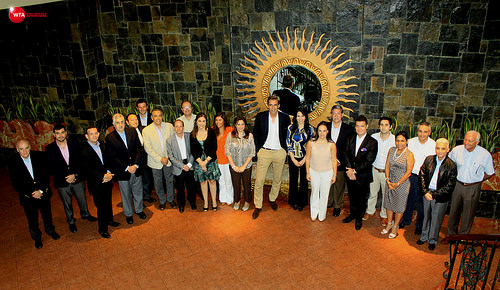EU working group meets on packaging of unhealthy products
19/09/2012
Back to the overview
On 19 September, the European Parliament Environment, Public Health and Food Safety (ENVI) Committee held a Health Working Group workshop on the “Packaging of unhealthy products”. While the event focused chiefly on the packaging of tobacco products. Alcohol and food packaging were also briefly debated.
- Glenis Wilmott, British Labour MEP and Co-Chair of the Health Working Group, rejected the parallel between food and tobacco, and denied considering plain packaging for products other than tobacco: “Tobacco kills, there are not many products that you can say that about! We need to be sensible, we will not go to food”
“How can we make sure that packaging is also used to promote healthy products?”, she asked, adding that there was no single policy that would be appropriate for food, alcohol and tobacco altogether, as all policy options taken should be proportionate to the potential health damage of the product itself.
- Professor Alberto Alemanno, Associate Professor of Law at HEC Paris, gave a presentation on misleading packaging practices, which he said sometimes fell under the remit of the Unfair Commercial Practices Directive. His presentation included several examples including copy-cat packaging and slack fill/selling air. He highlighted the current flaws of the UCP Directive (which will be assessed in a report scheduled for October 2012), and said that packaging policies should be more context-specific.
- Eric Poudelet, Director of the Food Safety Unit (Directorate-General for Health and Consumers (DG SANCO) of the European Commission distinguished three types of products:
1. Unsafe products: The Commission makes a distinction between safe and unsafe products: unsafe products are withdrawn immediately (e.g. products which can cause allergies).
2. Unhealthy products: Such products are not banned as the potential harm they can cause depend on the quantity consumed. From alcohol to salted peanuts, the impact on health is always a question of quantity, he said. Instead, the Commission promotes consumer empowerment.
3. Misleading products: There is no real definition of “misleading products” but health claims on products is a good example.
- Ruth Veale, Head of food, health, environment and safety at EU Consumer association BEUC, was the only participant who discussed food marketing and its alleged influence on children. she believes that while many actions and codes have been taken up by the industry in the EU, there are still many gaps in self-regulation, and complained that progress is coming too slowly: “As NGOs, we wonder: How long should we give SR a chance until we take it to the next level?”
As discussed at the 12 September RAC Meeting in Brussels, the secretariat will distribute a position paper to build a case for delinking food and tobacco which will be presented to the entire group during the 5 December RAC meeting. The paper will feed into RAC for a broader approach.
For more information on the Responsible Advertising and Children programme please contact Atu Darko.
Sign up to monthly WFA news
- Glenis Wilmott, British Labour MEP and Co-Chair of the Health Working Group, rejected the parallel between food and tobacco, and denied considering plain packaging for products other than tobacco: “Tobacco kills, there are not many products that you can say that about! We need to be sensible, we will not go to food”
“How can we make sure that packaging is also used to promote healthy products?”, she asked, adding that there was no single policy that would be appropriate for food, alcohol and tobacco altogether, as all policy options taken should be proportionate to the potential health damage of the product itself.
- Professor Alberto Alemanno, Associate Professor of Law at HEC Paris, gave a presentation on misleading packaging practices, which he said sometimes fell under the remit of the Unfair Commercial Practices Directive. His presentation included several examples including copy-cat packaging and slack fill/selling air. He highlighted the current flaws of the UCP Directive (which will be assessed in a report scheduled for October 2012), and said that packaging policies should be more context-specific.
- Eric Poudelet, Director of the Food Safety Unit (Directorate-General for Health and Consumers (DG SANCO) of the European Commission distinguished three types of products:
1. Unsafe products: The Commission makes a distinction between safe and unsafe products: unsafe products are withdrawn immediately (e.g. products which can cause allergies).
2. Unhealthy products: Such products are not banned as the potential harm they can cause depend on the quantity consumed. From alcohol to salted peanuts, the impact on health is always a question of quantity, he said. Instead, the Commission promotes consumer empowerment.
3. Misleading products: There is no real definition of “misleading products” but health claims on products is a good example.
- Ruth Veale, Head of food, health, environment and safety at EU Consumer association BEUC, was the only participant who discussed food marketing and its alleged influence on children. she believes that while many actions and codes have been taken up by the industry in the EU, there are still many gaps in self-regulation, and complained that progress is coming too slowly: “As NGOs, we wonder: How long should we give SR a chance until we take it to the next level?”
As discussed at the 12 September RAC Meeting in Brussels, the secretariat will distribute a position paper to build a case for delinking food and tobacco which will be presented to the entire group during the 5 December RAC meeting. The paper will feed into RAC for a broader approach.
For more information on the Responsible Advertising and Children programme please contact Atu Darko.
Sign up to monthly WFA news














































































